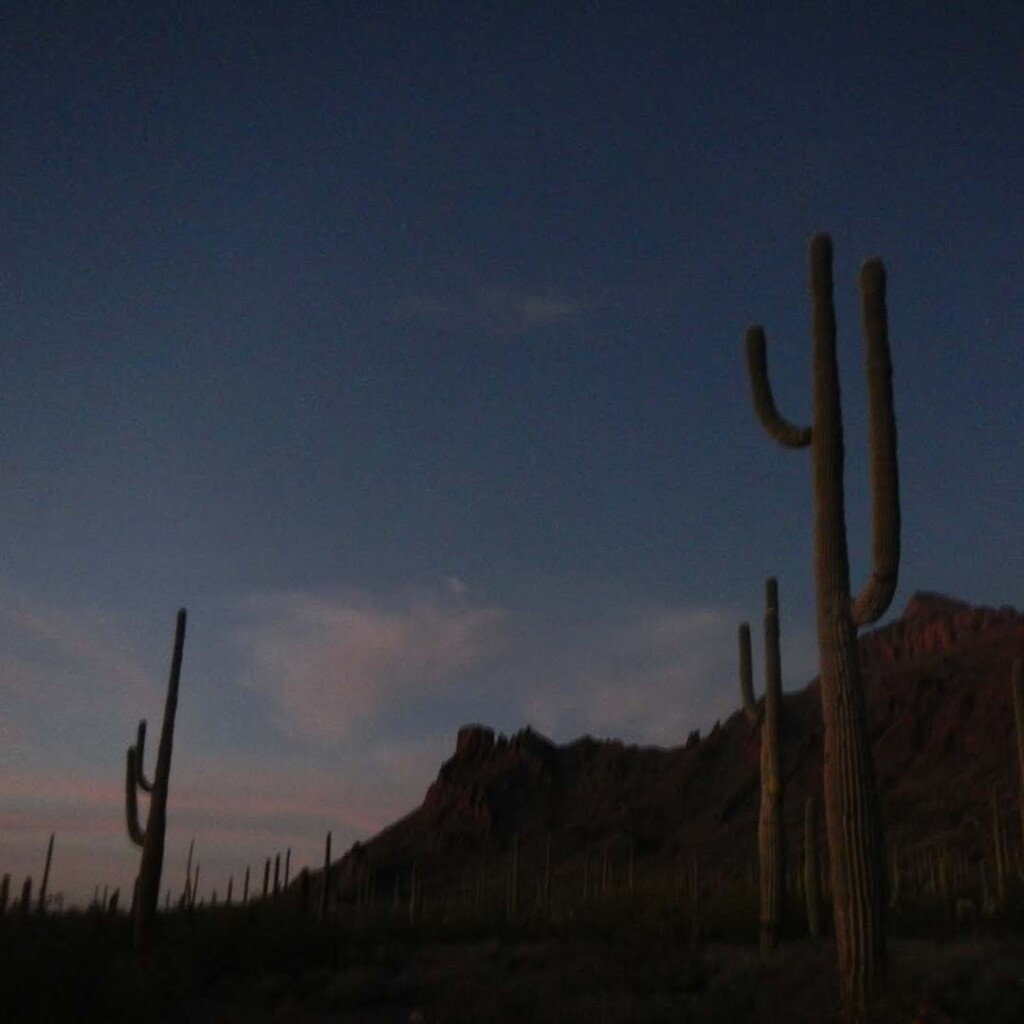Guest Blog by Bill Bemis
This is the first in a series of blogs on “Wellness and Nature Connections.” Stay tuned for more insights from other voices throughout the Sky Islands.
One midnight many years ago, after I finished the swing shift at the psychiatric ward, my friend Robie and I headed west on Ajo Road bound for Organ Pipe National Monument. As we drove through the night across the Tohono O’odham Reservation, I thought about the shift I had just finished — the suicidal patient I had interviewed in the ER, the depressed, the psychotic, the agitated people on the unit, the stories of addiction, despair, rage and fear, conflict and family trauma.
At the campground, the desert was profoundly quiet and still. Lying in our sleeping bags and looking up at stars so numerous we could scarcely make out a constellation, we talked quietly until we saw the sudden brief trail of a shooting star.
A few minutes later, there was another, and another, and another. We stopped talking and just watched until sleep drew the curtains on the show.
The next day, we hiked in the crisp clear winter air in canyons in the Ajo Mountains through wild gardens of saguaro, organ pipe and ocotillo, jojoba and brittlebush, past massive craggy monuments of stone. We were young and strong, and we climbed steep slopes of loose rock, cholla, and cat’s claw. Aware only of my labored rhythmic breathing and the coolness of the winter breeze on my sweating face, concentrating on finding the easiest route up, I no longer brooded on the daily tragedies I encountered at work. On high ridgelines, we stopped to take water and gaze on the huge expanse of wild land, mostly empty of we humans and our follies.
Finding the outdoor places where there’s little evidence of humans’ hand and where I can feel my body work became a frequent activity over the course of my 40+ years as a behavioral health clinician. I have often felt gratitude for coming to ground here in the Sonoran Desert and the Sky Island archipelago. I’ve crossed many a desert or grassland sea to linger a time on the shores and peaks of these islands, and they’ve never failed to soothe my fears, lift my mood, or calm my anger. These healing interludes helped me to be fully there with the hundreds of individuals at the clinic whose stories I have listened to. And they helped manage the anxieties and frustrations that come with helping people in extreme distress.
The experience of nature in the Sky Islands, the Sonoran Desert, and many other places has helped me manage my own distress too, in addition to providing an endless source of fascination and beauty. Sometimes I have not even needed to leave the house. As I write this, I look up and see a hummingbird three feet from my face at the feeder outside my office window and a ladderback woodpecker hunting insects on the mesquite tree by the back fence where I’ve often watched a Cooper’s hawk feasting on a dove. Perhaps it was the same Cooper’s hawk who took a tour recently of our front courtyard, perching regally atop the shade umbrella.

What is the value for our mental health of connecting to nature?
It is the value of finding a different perspective on our troubles and worries, a perspective that allows us to realize that there is a natural order with its own rhythms that continues indifferent to our ups and downs and on a scale from the minute to the incomprehensibly vast. We are a part of that order, no matter how unconscious of that connection we may sometimes be. Connecting to that order reassures us and reduces the emotional impact of our daily stress.
I owe a great deal to nature. That’s a large part of the reason I began volunteering with Sky Island Alliance when I transitioned into retirement. I wanted to give back in some way.
Bill Bemis is a retired clinical social worker with over forty years of working in medical and behavioral health settings. Based in Tucson, he currently serves as a member on SIA’s board of directors.

